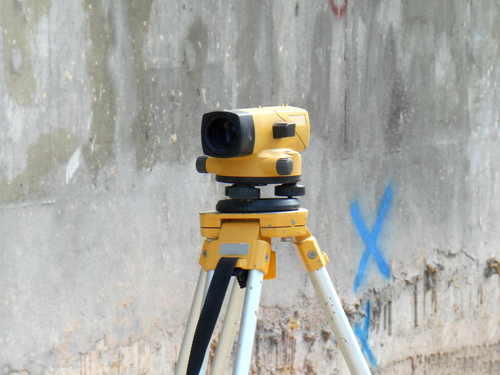When Would A Plane Survey Be Necessary?

A plane survey, also known as an aerial survey, is a method used to gather geographic data and create accurate maps using aircraft-mounted sensors and imaging technologies. While ground surveys are more commonly used for many applications, there are certain situations where a plane survey becomes necessary. This blog post explores the different scenarios where a plane survey is deemed essential, highlighting the advantages and applications of this surveying technique.
Large-Scale Mapping and Land Surveys
One of the primary reasons for conducting a plane survey is to create large-scale maps and carry out comprehensive land surveys. When a specific area needs to be mapped over a vast expanse, such as a city, county, or even an entire country, aerial surveys are highly efficient and cost-effective. By capturing bird’s-eye view imagery and employing advanced sensors like LiDAR (Light Detection and Ranging), accurate and high-resolution maps can be generated, showcasing details such as topography, boundaries, and land use patterns.
Environmental Monitoring and Ecology Studies
In environmental monitoring and ecology studies, plane surveys play a critical role. Aerial surveys allow scientists and researchers to gather data on the distribution and health of various ecosystems, including forests, wetlands, and coral reefs. The ability to cover a large area quickly and efficiently enables the identification and assessment of environmental changes, such as deforestation, habitat loss, or pollution. These surveys provide valuable insights into the state of the environment and aid in conservation efforts.
Natural Disaster Assessment and Management
During and after natural disasters, such as hurricanes, floods, or earthquakes, a plane survey becomes necessary for rapid assessment and management. Aerial imagery provides emergency response teams and relief organizations with up-to-date information on the extent of the damage, the identification of affected areas, and the planning of rescue and recovery operations. The speed and efficiency of plane surveys in these situations are invaluable for saving lives and allocating resources where they are most needed.
Infrastructure Planning and Development
The planning and development of infrastructure projects, such as highways, railways, and utility networks, often require accurate mapping and surveying. Plane surveys enable engineers and planners to capture detailed information about the terrain, existing infrastructure, and adjacent land use. This aerial perspective aids in making informed decisions regarding route selection, site suitability, and potential environmental impacts. Additionally, the resulting data can be used for engineering design, cost estimation, and construction supervision.
Urban Planning and Real Estate Development
In urban planning and real estate development, a plane survey is invaluable in understanding the existing urban fabric and informing future decisions. Aerial surveys provide planners with an overview of land use, building density, transportation networks, and other spatial factors that inform zoning regulations, development strategies, and urban design guidelines. This data contributes to making informed decisions to improve the livability, sustainability, and efficiency of cities.
Archaeological Research and Cultural Heritage Preservation
A plane survey offers significant benefits in archaeological research and cultural heritage preservation. By capturing high-resolution imagery and using specialized sensors, historical sites and archaeological remains can be documented and analyzed more accurately and comprehensively. Aerial surveys help identify buried structures, unearth hidden patterns, and uncover archaeological features that are not visible from the ground. This aids archaeologists in their understanding of past civilizations and supports efforts to preserve and protect cultural heritage sites.
Environmental Impact Assessment
Before undertaking large-scale infrastructure projects or industrial activities, it is crucial to conduct an environmental impact assessment (EIA). Aerial surveys provide valuable data for understanding and assessing the potential impacts of a project on the surrounding environment. By analyzing aerial imagery and remote sensing data, environmental factors like vegetation cover, water bodies, wildlife habitats, and sensitive areas can be identified, allowing for appropriate mitigation measures to be taken into consideration during project planning and design.
Summary
While ground surveys remain the go-to method for many applications, there are numerous circumstances where a plane survey becomes necessary, offering distinct advantages. Large-scale mapping, environmental monitoring, natural disaster assessment, infrastructure planning, urban development, archaeological research, and environmental impact assessments are just a few examples of scenarios where the use of aerial surveys is highly advantageous. By harnessing the power of aircraft-mounted sensors and imaging technologies, accurate and comprehensive data can be gathered, ultimately informing critical decision-making processes across various fields and sectors.
Need Land Surveyors in Texas?
At Smyth Surveyors, Inc., we offer professional, official, and dependable land surveying in Texas. Our staff are all trained and licensed with our owner holding an L.S.L.S license. We can offer surveying for gas and oil well locations, pipeline right-of-way acquisition and construction alignment, determination of original survey boundaries, title boundary surveys, topographic surveys, and construction staking. If you are looking for a surveying company that has a prestigious record and an impeccable reputation look no further than Smyth Surveyors, Inc. Contact us today to speak with one of our friendly project managers and set up some time with us!